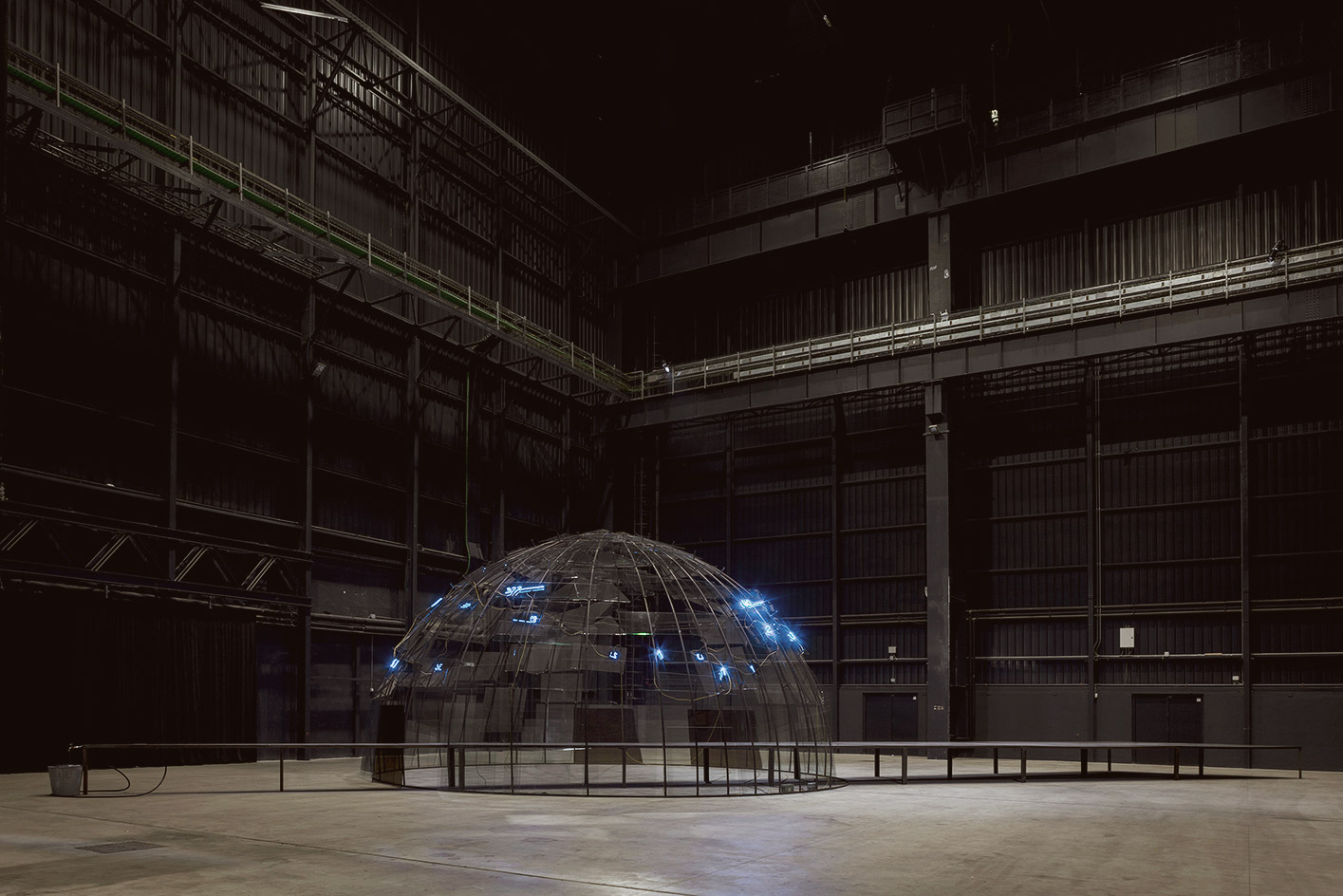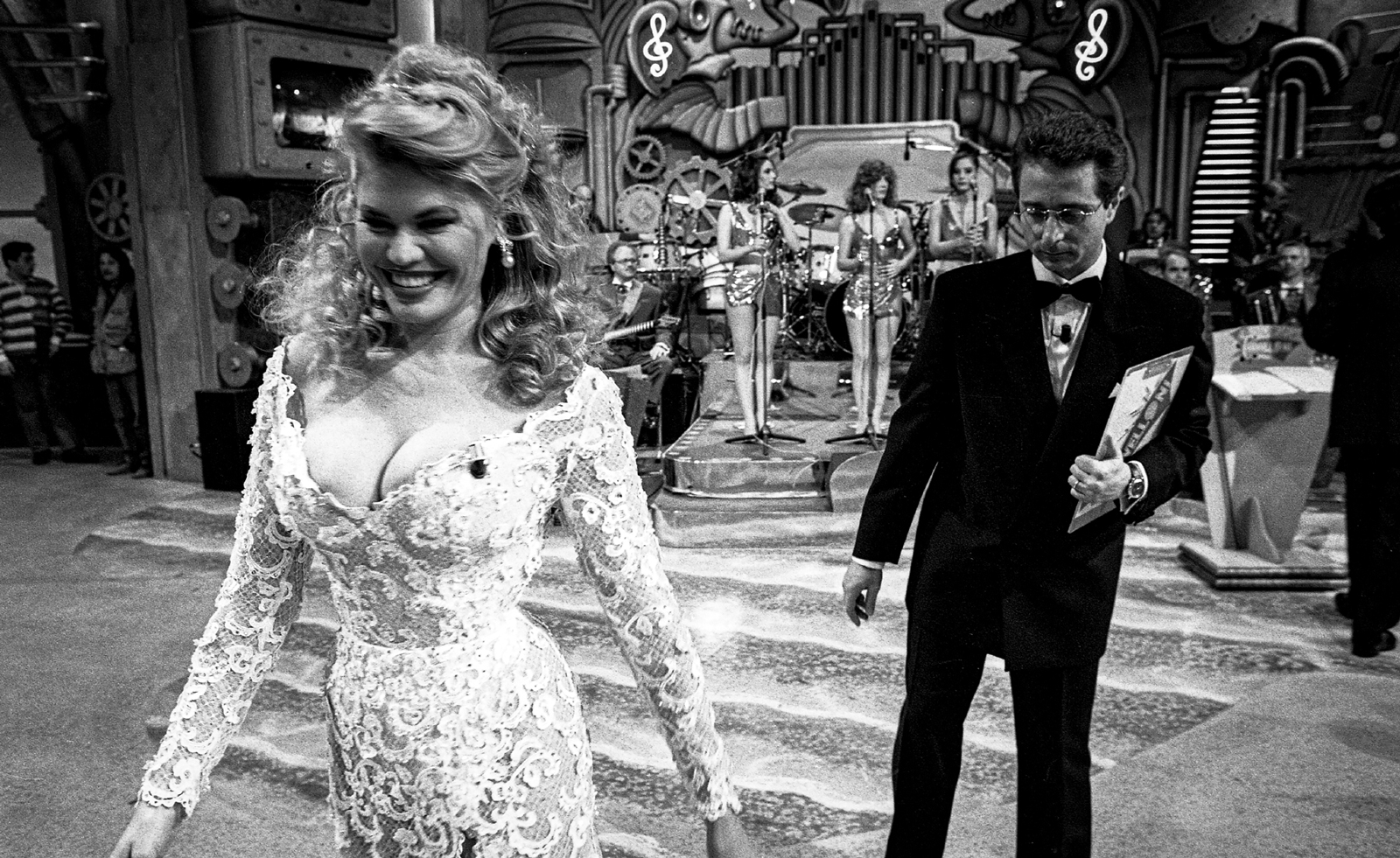Largest collection of Mario Merz igloos pop up in Milan

In 1967, critic Germano Celan coined arte povera, an umbrella term for a cluster of avant-garde, anti-consumerist creatives originating from Turin, Rome and Milan. One of these artists was Mario Merz who sought to oppose what he viewed as the dehumanising forces of industrialism and the ‘ready-made’. In the late 1960s, this concept was embodied in what would become his signature motif, the igloo.
Beginning his career in the wake of the Second World War, Merz’s political activism in the Giustiza e Libertà anti-fascist movement earned him a year in jail. There he met critic Luciano Pistoi, who would later become a crucial influence in the artist’s early work, fuelled by Bricolage, Informalism and the 20th-century writers including Cesare Pavese and Ezra Pound.
His first igloo was conceived in 1968 in Rome’s Galleria Arco d’Alibert. Igloo di Giap is a hemispherical steel structure clad in bags of clay with snippets of literature scrawled around the circumference in neon. This was pivotal; Merz’s paintings were sidelined and he got a taste for the igloo’s symbolic properties, physical limitations and prehistoric roots. The artist became enveloped in its mobility, resourcefulness and potential; a venture that would endure, evolve and germinate for another 40 years until the artist’s death in 2003.

Installation view of ‘Igloos’, by Mario Merz at Pirelli HangarBicocca, Milan. Courtesy of Pirelli HangarBicocca, Milan.
The cacophonous 200,000 sq m decommissioned factory space of Pirelli HangarBicocca is now hosting the largest ever staging of these works in its Cubo and Navate spaces. In collaboration with Merz Foundation, the exhibition builds on the artist’s solo show at the Kunsthaus, Zurich in 1985, with 31 of the iconic sculptures sourced from private collections and global art galleries curated in a largely chronological order. ‘Here, the idea was that the igloos would form one work,’ says Vicente Todolí, Pirelli HangarBicocca’s artistic director.
Merz had a persistent fascination with Fibonacci sequence, a mathematical pattern of numbers whereby any given number is the sum of the two numbers that precede it. The sequence is a recurring theme on and around the igloos and even appears as a substantial standalone work running along 100m of Le Navate’s rafters illuminated in neon.
It was the idea that the sequence was infinite, rational and corresponded with proliferation in nature, that Merz particularly revelled in. ‘He always had these in his studio [Fibonacci numbers] they were the rhythm of his work and life,’ says Todolí. For Merz, mathematics was an abstract concept, it was clearly entrenched in the laws of nature; his igloos are in turn firmly rooted in natural forms.

Installation view of ‘Igloos’, by Mario Merz at Pirelli HangarBicocca, Milan. Courtesy of Pirelli HangarBicocca, Milan. © Mario Merz, by SIAE 2018
Here, the artist’s aptitude for mixed media and material combinations is brought to the fore. He married raw, primordial substances like mud, moving water and wax with industrial materials including steel rods, precariously placed glass shards and newspaper stacks. As the concept evolved, he began to incorporate other metaphors including the table, signifying basic human need, fulfilment and social interaction.
This gave rise to a body of work riddled with contradictions: enclosure and exposure; occupation and absence; manmade and organic. ‘Mario liked contrast, he liked to play with paradoxes,’ Todolí reflects.
In this vast ‘nomadic’ encampment, 40 years of devotion to one form comes to fruition. For Merz, the igloo was a timeless symbol of humanity and organic transformation. ‘The igloo is a home, a temporary shelter,’ the artist remarked in 1984, ‘since I consider that ultimately, today, we live in a very temporary era, for me the sense of the temporary coincides with this name: igloo.’

Installation view of ‘Igloos’, by Mario Merz at Pirelli HangarBicocca, Milan. Courtesy of Pirelli HangarBicocca, Milan. © Mario Merz, by SIAE 2018

Installation view of ‘Igloos’, by Mario Merz at Pirelli HangarBicocca, Milan. Courtesy of Pirelli HangarBicocca, Milan. © Mario Merz, by SIAE 2018

Sentiero per qui, 1986, by Mario Merz. Courtesy of Pirelli HangarBicocca, Milan. © Mario Merz, by SIAE 2018

Installation view of ‘Igloos’, by Mario Merz at Pirelli HangarBicocca, Milan. Courtesy of Pirelli HangarBicocca, Milan. © Mario Merz, by SIAE 2018

La goccia d’acqua, 1987, by Mario Merz. Courtesy of Pirelli HangarBicocca, Milan. © Mario Merz, by SIAE 2018
INFORMATION
‘Mario Merz: Igloos’ is on view until 24 February 2019. For more information, visit the Pirelli HangarBicocca website
ADDRESS
Pirelli HangarBicocca
Via Chiese, 2
20126 Milan
Wallpaper* Newsletter
Receive our daily digest of inspiration, escapism and design stories from around the world direct to your inbox.
Harriet Lloyd-Smith was the Arts Editor of Wallpaper*, responsible for the art pages across digital and print, including profiles, exhibition reviews, and contemporary art collaborations. She started at Wallpaper* in 2017 and has written for leading contemporary art publications, auction houses and arts charities, and lectured on review writing and art journalism. When she’s not writing about art, she’s making her own.
-
 Extreme Cashmere reimagines retail with its new Amsterdam store: ‘You want to take your shoes off and stay’
Extreme Cashmere reimagines retail with its new Amsterdam store: ‘You want to take your shoes off and stay’Wallpaper* takes a tour of Extreme Cashmere’s new Amsterdam store, a space which reflects the label’s famed hospitality and unconventional approach to knitwear
By Jack Moss
-
 Titanium watches are strong, light and enduring: here are some of the best
Titanium watches are strong, light and enduring: here are some of the bestBrands including Bremont, Christopher Ward and Grand Seiko are exploring the possibilities of titanium watches
By Chris Hall
-
 Warp Records announces its first event in over a decade at the Barbican
Warp Records announces its first event in over a decade at the Barbican‘A Warp Happening,' landing 14 June, is guaranteed to be an epic day out
By Tianna Williams
-
 25 artists reimagine the teapot at Milan Design Week 2025
25 artists reimagine the teapot at Milan Design Week 2025Come to Loewe’s cross-cultural tea party: pots of fun in Milan as artists, designers and architects celebrate the universal comfort of tea
By Hannah Silver
-
 Inside the unexpected collaboration between Marni’s Francesco Risso and artists Slawn and Soldier
Inside the unexpected collaboration between Marni’s Francesco Risso and artists Slawn and SoldierNew exhibition ‘The Pink Sun’ will take place at Francesco Risso’s palazzo in Milan in collaboration with Saatchi Yates, opening after the Marni show today, 26 February
By Hannah Silver
-
 What makes fashion and art such good bedfellows?
What makes fashion and art such good bedfellows?There has always been a symbiosis between fashion and the art world. Here, we look at what makes the relationship such a successful one
By Amah-Rose Abrams
-
 Remembering Oliviero Toscani, fashion photographer and author of provocative Benetton campaigns
Remembering Oliviero Toscani, fashion photographer and author of provocative Benetton campaignsBest known for the controversial adverts he shot for the Italian fashion brand, former art director Oliviero Toscani has died, aged 82
By Anna Solomon
-
 Distracting decadence: how Silvio Berlusconi’s legacy shaped Italian TV
Distracting decadence: how Silvio Berlusconi’s legacy shaped Italian TVStefano De Luigi's monograph Televisiva examines how Berlusconi’s empire reshaped Italian TV, and subsequently infiltrated the premiership
By Zoe Whitfield
-
 Louis Fratino leans into queer cultural history in Italy
Louis Fratino leans into queer cultural history in ItalyLouis Fratino’s 'Satura', on view at the Centro Pecci in Italy, engages with queer history, Italian landscapes and the body itself
By Sam Moore
-
 Out of office: what the Wallpaper* editors have been doing this week
Out of office: what the Wallpaper* editors have been doing this weekA snowy Swiss Alpine sleepover, a design book fest in Milan, and a night with Steve Coogan in London – our editors' out-of-hours adventures this week
By Bill Prince
-
 Inside Jack Whitten’s contribution to American contemporary art
Inside Jack Whitten’s contribution to American contemporary artAs Jack Whitten exhibition ‘Speedchaser’ opens at Hauser & Wirth, London, and before a major retrospective at MoMA opens next year, we explore the American artist's impact
By Finn Blythe